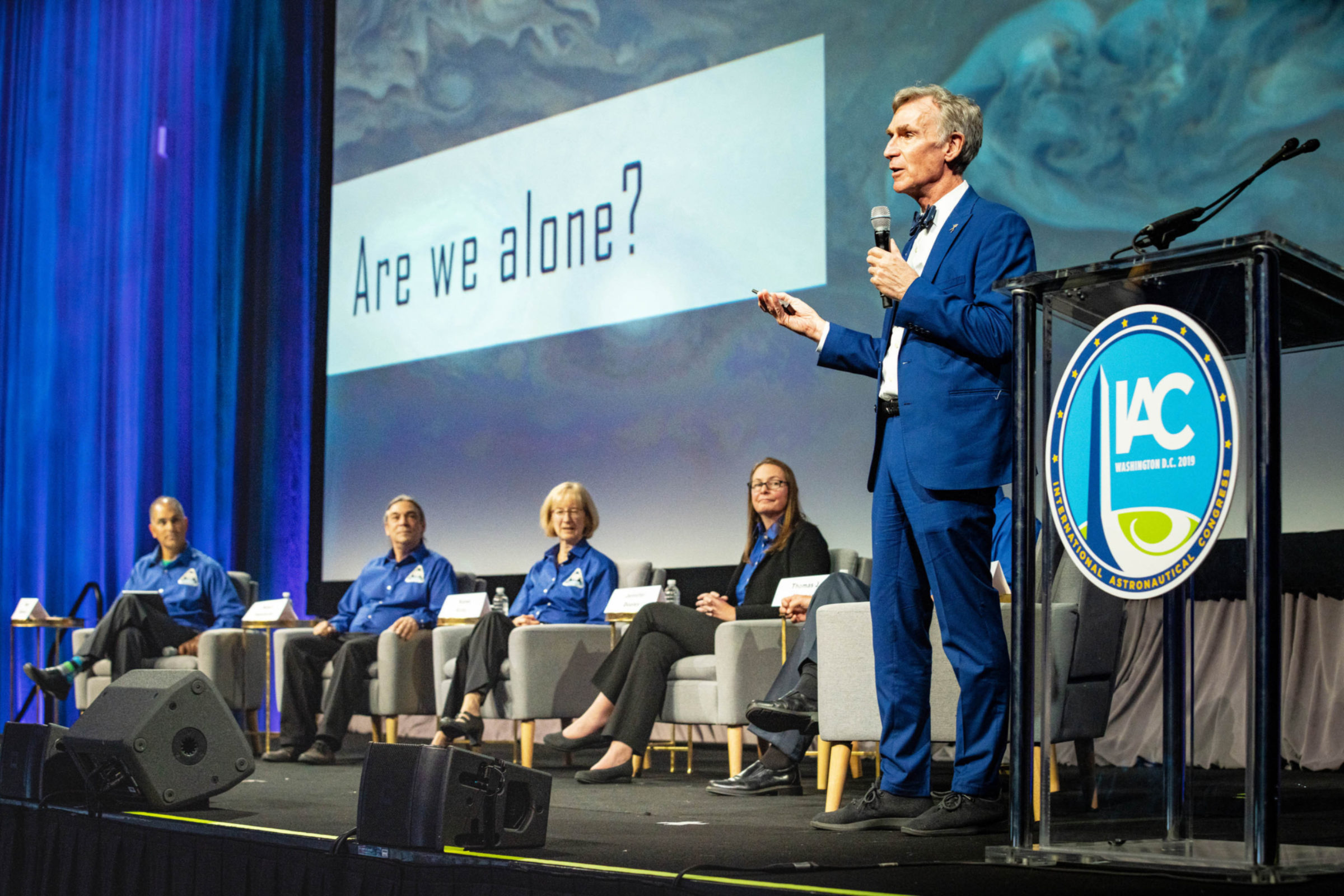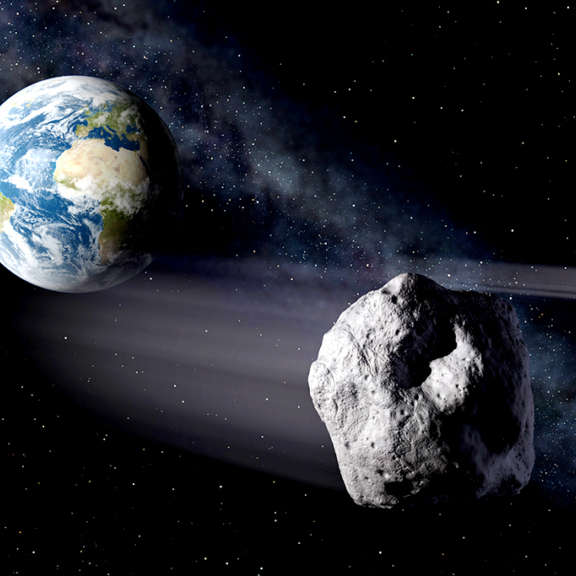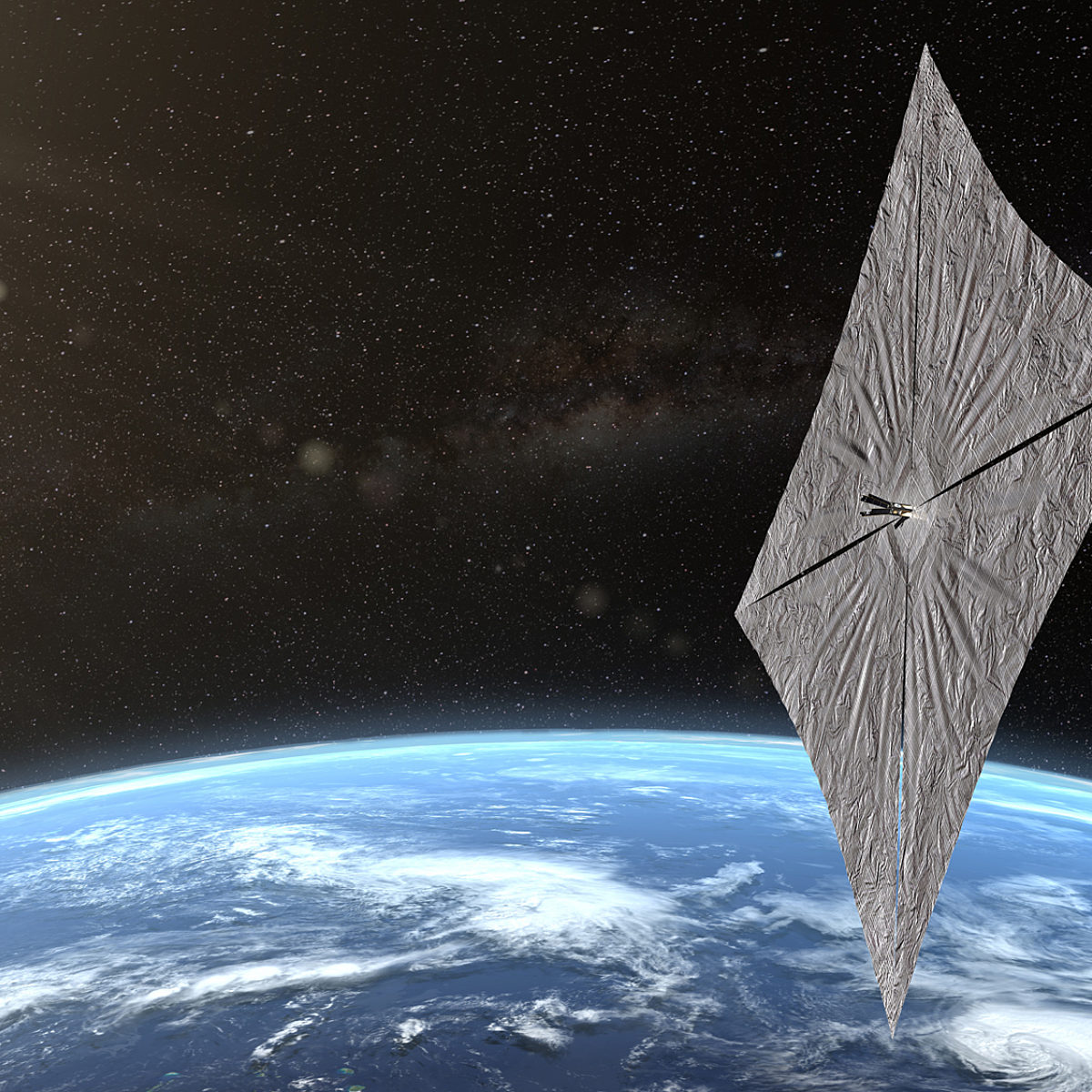Jason Davis • Nov 01, 2019
Planetary Society Talks Europa, Planetary Defense, and Solar Sailing in Washington D.C.
In the mid-2020s, NASA's Europa Clipper spacecraft will launch to Jupiter on a mission to determine whether Europa's subsurface ocean could support life. Could there be Europan shrimp hanging out near hydrothermal vents on the seafloor, or bacteria floating beneath the moon's icy shell? Europa Clipper is an initial step toward figuring that out.
For Planetary Society CEO Bill Nye, the reason we're going to Europa boils down to 2 questions he says everybody has asked at one point: Where did we come from? Are we alone in the universe?
"These questions are fundamental, and a mission like Europa Clipper is how we work toward answering them," said Nye, speaking in Washington, D.C. at the 70th International Astronautical Conference, or IAC. "If we were to find evidence of life—let alone something alive—on another world, it would change this one. Everybody on Earth would feel differently about being a living thing in the universe."

Europa Clipper, a mission to Jupiter's icy moon
Europa Clipper will help us determine if Jupiter's icy moon Europa could support life.
The IAC is an annual gathering where government agencies, space industry representatives, the media, and space fans come together to share ideas and discuss the latest developments in all things space. Nye spoke at a Europa Clipper presentation that featured mission team members from NASA's Jet Propulsion Laboratory and the Johns Hopkins Applied Physics Laboratory, which are jointly developing the mission. The presentation was one of several activities The Planetary Society participated in during IAC this year, thanks to the support of our members and donors.
A mission to Europa became one of The Planetary Society's top advocacy priorities in 2013 after the planetary science community's Decadal Survey declared Europa was 1 of its top 3 recommended targets for a large mission. The Society teamed up with members of Congress to fund the mission, and Society members sent tens of thousands of letters to their congressional representatives in support.
"In 2014, after our 'Lure of Europa' event on Capitol Hill, I realized just how much public support there was for this mission," said Planetary Society chief advocate and senior space policy adviser Casey Dreier. "It's great to see NASA embrace this mission, after our members pushed so hard to make it a reality."
Dreier was in D.C. for the weeklong conference, but couldn't attend the Europa presentation because he was busy talking about another one of The Planetary Society's priorities: planetary defense. He and Planetary Society Chief of Washington Operations Brendan Curry visited the Pentagon to speak at a meeting of the Joint Space Task Group, which includes personnel from the Department of Defense and other government agencies. At the meeting, Dreier outlined the threat posed by near-Earth asteroids, the history of planetary defense funding, and what we can do to prevent a devastating asteroid impact.
Defend Earth
How The Planetary Society works to decrease the risk of Earth being hit by an asteroid or comet.
Nye also talked about planetary defense during an IAC special session. He kicked off the session by leaping to his feet, shouting "Who's ready to defend the Earth?" and reminding attendees that the dinosaurs did not have a space program when Earth was struck by an asteroid 66 million years ago. NASA planetary defense chief Lindley Johnson was a panelist and reiterated the importance of a new space-based telescope to hunt for hazardous near-Earth asteroids.
The Society also presented results from one of our own world-exploring technologies: LightSail 2. During a session on next-generation space propulsion, LightSail Program Manager Bruce Betts presented a paper recapping highlights from the mission, including LightSail 2's successful demonstration of controlled solar sailing. Several LightSail 2 team members attended the talk.
"After a decade of work on this project, it was satisfying to be able to present results and discuss the mission with other experts working on advanced space propulsion," said Betts. "We’ll continue flying LightSail 2 and sharing what we’ve learned with the space community, with future solar sailing missions like NASA’s NEA Scout, and with the general public."
LightSail, a Planetary Society solar sail spacecraft
LightSail is a citizen-funded project from The Planetary Society to send a small spacecraft, propelled solely by sunlight, to Earth orbit.
The LightSail 2 mission was backed by funding from more than 50,000 Planetary Society members, private citizens, foundations, and corporate partners. The Planetary Society will continue to share results from the mission and advocate for more missions to search for life and explore other worlds. As Nye said during his Europa Clipper presentation, "there's reasons to do these missions that are just deep, deep within us."
Support our core enterprises
Your support powers our mission to explore worlds, find life, and defend Earth. You make all the difference when you make a gift. Give today!
Donate

 Explore Worlds
Explore Worlds Find Life
Find Life Defend Earth
Defend Earth




